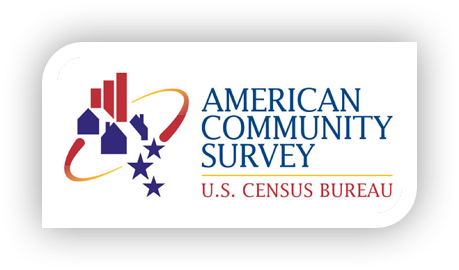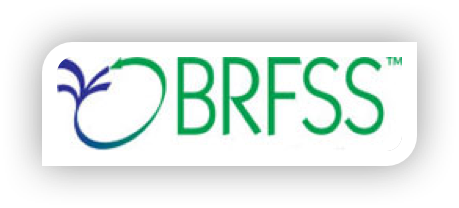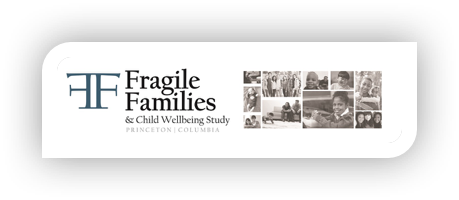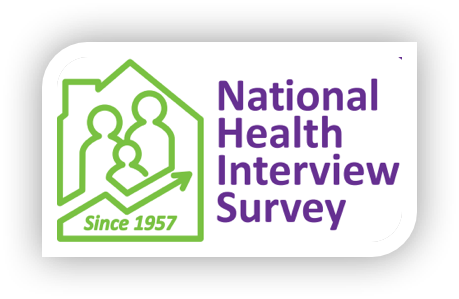Compendium of Health Data Sources for Parents with Disabilities in the United States 2017
Download PDF | Plain-language version
 Table of Contents
Table of Contents
American Community Survey (ACS)
Behavioral Risk Factor Surveillance System (BRFSS)
The Fragile Families and Child Wellbeing Study (FFCWS)
Medical Expenditure Panel Survey (MEPS)
National Core Indicators Project Consumer Survey (NCI)
National Comorbidity Survey (NCS)
National Health Interview Survey (NHIS)
National Survey of Family Growth (NSFG)
Survey of Income and Program Participation (SIPP)
Overview
The groundbreaking National Council on Disability report, Rocking the Cradle: Ensuring the Rights of Parents with Disabilities and their Children, highlights a “paucity of data and research on the prevalence of parents with disabilities, their needs, and their experiences.” This report, titled “Compendium of Health Data Sources for Parents with Disabilities in the United States”, is a summary of selected national data sources that currently capture health information pertaining to parents with disabilities in the United States. Understanding and using these national data sources is critical for research and advocacy efforts in advancing the knowledge about and the rights of parents with disabilities.
After an identification process via literature and web searches, nine data sources are selected based on methods of disability identification and the identification of parent status, and the inclusion of health information. The following information is included for each data source: brief overview of the data source, website, identification of parents with disabilities, disability status questions, measures related to physical and mental health, data limitations, and potential for linkages to other data sources. After experts’ and editor’s reviews, the information is revised and presented in the form of this report.
When using this report, it is important to recognize the limitations inherent to the secondary data methodology. The national datasets were designed by diverse entities for different purposes, had varied survey methodologies, and were focusing on different topics. There are variances in the definition of parents and disabilities. However, this compendium shows that by leveraging the strengths of each data source, there is a large potential for future studies on parents with disabilities using national, population-based datasets.
American Community Survey (ACS)
Introduction
The American Community Survey (ACS) is an ongoing annual survey that provides information about demographic, economic, housing and social status of the U.S. civilian population. The ACS is fielded by the U.S. Census Bureau annually. About 1 in 38 U.S. households per year receives an invitation to participate in the ACS.
Website: https://www.census.gov/programs-surveys/acs/
Data Availability Summary
Per preliminary estimates, approximately 4.8 million families in the United States (based on average 5-year 2010-14 estimates) have a parent or grandparent with a disability with children under the age of 18.
In the ACS, parents include biological parents, adoptive parents and stepparents. Fathers-in-law and mothers-in-law are included in the “Parent-in-law” category on the questionnaire. Own child refers to never-married children under 18, whether they are biological children, adopted children, or stepchildren.
Parents’ disabilities were identified with a series of six questions (known as the ACS-6). These indicators include respondents had difficulty hearing, difficulty seeing even when wearing glasses, difficulty processing information or making decisions, difficulty walking or using stairs, difficulty dressing or bathing, or difficulty doing errands alone.
The ACS survey provides information on health insurance coverage and public assistance benefits.
Limitations
The ACS does not contain functional measures or levels of disabilities. Psychiatric disability and mental health measures are also not available. Since the ACS’s focus is not to monitor health, its measures have limited importance for health surveillance of parents with disabilities.
Linkages
The ACS has potential to be linked to the U.S. Census and administrative data for additional analysis.
Behavioral Risk Factor Surveillance System (BRFSS)
Introduction
The Behavioral Risk Factor Surveillance System (BRFSS) is a survey system that uses phone interviews to collect state data on preventive health practices, chronic health conditions, and risk behaviors. Data are collected monthly from the civilian non‐institutional adult population (ages 18 or over) residing in households with telephones from all 50 states as well as the District of Columbia and three U.S. territories. The survey is funded by the Centers for Disease Control and Prevention, other federal agencies, such as the Health Resources and Services Administration, Administration on Aging, Department of Veterans Affairs, and Substance Abuse and Mental Health Services Administration, and state agencies.
Website: https://www.cdc.gov/brfss/
Data Availability Summary
For the 2014 BRFSS, approximately 115,317 parents (unweighted) reported having a disability[1]. Parents with disabilities were identified through questions about the number of children under 18 in the household and the ACS-6 disability questions. BRFSS asks of the respondent’s relationship with the child (parent, including biological, step, or adoptive parent, grandparent, or foster parent or guardian).
BRFSS includes health measures about general health, potential risk factors, activity limitations, substance abuse and dependence, chronic conditions, and use of preventive services. It must also be noted that questions included in the BRFSS may vary by year and by state.
Limitations
The BRFSS methodology precludes participation of those living in institutions or needing assistance with completing the interview owing to cognitive or intellectual disabilities. People who are deaf or hard of hearing may also be excluded from this telephone survey. The BRFSS disability-specific questions do not allow for determination of type, duration, severity, or onset of disability,
Linkages
BRFSS data can be linked to other external data sources, such as measure of environmental quality[2].
The Fragile Families and Child Wellbeing Study (FFCWS)
Introduction
The Fragile Families and Child Wellbeing Study (FFCWS) is a longitudinal study and provides data on prenatal care, attitudes towards marriage, social support, knowledge about local policies and community resources. The study is fielded by researchers at Princeton University and Columbia University. The FFCWS collects data on approximately 4,700 births (3,600 non-marital, 1,100 marital) in 75 hospitals in 20 cities across the United States. The core Study consists of interviews with both mothers and fathers at birth and again when children are ages one, three, five, and nine. The parent interviews collect information on attitudes, relationships, parenting behavior, demographic characteristics, health (mental and physical), economic and employment status, neighborhood characteristics, and program participation. Additionally, in-home assessments of children and their home environments were conducted at ages three, five, and nine. The in-home interview collects information on children’s cognitive and emotional development, health, and home environment.
Website: http://www.fragilefamilies.princeton.edu/
Data Availability Summary
The average sample size of parents with disability in FFCWS is about 3,400. Parents are identified through parent-child relationship variables. Disability is identified via questions that ask whether respondents receive disability income, or if they are not looking for work because of a disability.
Health measures include general health status, life status, asthma, height and weight, health insurance or Medicaid coverage, substance use, mental health conditions, family mental health history, impulsivity, prenatal care, IQ (using the WAIS as a measure), and life satisfaction.
Limitations
The disability definition is tied to employment.
Linkages
There are no known linkages to other data sources.
Medical Expenditure Panel Survey (MEPS)
Introduction
The Medical Expenditure Panel Survey (MEPS), which began in 1996, is a set of large-scale surveys of families and individuals, their medical providers (doctors, hospitals, pharmacies, etc.), and employers across the United States, fielded by the Agency for Healthcare Research and Quality (AHRQ). The Household Component (MEPS-HC) is the most often used component in health research, which collects data on U.S. civilian non-institutionalized population via household interviews. MEPS asks about the specific health services that individuals use, how frequently they use them, the cost of these services, and how they are paid for. MEPS is the most comprehensive source of data on the cost and use of health care and health insurance in the United States.
Website: https://meps.ahrq.gov/mepsweb/index.jsp
Data Availability Summary
The unweighted sample size of parents with disabilities for the aggregated 2007-2011 MEPS is 1,740, according to preliminary data; the weighted sample size is 2.8 million.
MEPS uses a relationship grid to define parental relationships, and co-residence with the child is required in order to be included in the survey. Parents include biological, adopted, or step parents. MEPS differentiates between mother- and father-specific data. MEPS defines the type and scope of a given parent’s disability through a series of questions about instrumental activities of daily living, activities of daily living, functional limitations, and activity limitations, as well as their duration.
MEPS provides a series of health-related measures, including general physical and mental health status, priority health conditions, and smoking status. MEPS also has information regarding access to health care (usual source of care and delayed or foregone care), utilization of care such as medical provider visits, prescribed medications, and information on expenditures.
Limitations
Co-residence status is required for the identification of parents.
Linkages
MEPS data from 1996 through 2012 are linked to person records on National Health Interview Survey files. From 2013, linked data can only be accessed on-site at CDC data centers with restrictions.
National Core Indicators Project Consumer Survey (NCI)
Introduction
The National Core Indicators (NCI) is a collaborative project between the National Association of State Directors of Developmental Disabilities Services (NASDDDS) and the Human Services Research Institute (HSRI). The goal is to gather a standard set of performance and outcome measures that can be used to track performance over time, to compare results across states, and to establish national benchmarks for disability services. The NCI places a heavy focus on intellectual and developmental disabilities; other disabilities are generally not covered. To be included in this data set, adults over 18 had to use at least one publicly-funded developmental disabilities service other than case management. Every year, a minimum of 400 randomly selected individuals per state from 20+ states are included. Data collection modes vary by component: administrative records are used for background information, in-person interviews for adult consumer survey, mailed pen-and-paper questionnaires for family survey, and online survey for staff survey.
Website: http://www.nationalcoreindicators.org/
Data Availability Summary
In 2015-16, two direct questions (“Is this person a parent?” “If the person has children under 18 years of age, does the child or children live with the person?”) was added to the NCI to ascertain parent status. Disability status is assumed since all respondents received developmental disabilities services. The NCI also includes health measures of general health status, preventive health screenings, exercise, health and safety, tobacco use, and psychotropic medication. To use NCI data, an access fee of $350 and up may apply.
Limitations
The sample is limited to people who are receiving state-provided services in states included in the survey. Moreover, many states use different inclusion categories. NCI only includes people with intellectual and developmental disabilities, which makes assessing disparities difficult. Medical proxies often fill out the health measures section, leading to a large number of “don’t know” answers. Due to the service receipt criterion, the NCI is not representative of the general population of people with intellectual and developmental disabilities in the United States. Also, due to differences in methodology, comparison between states is not viable with NCI data.
Linkages
N/A
National Comorbidity Survey (NCS)
Introduction
The National Comorbidity Survey (NCS) was a longitudinal survey on psychiatric disorders in the United States. It was designed to produce data on the prevalence, risk factors, and consequences of psychiatric morbidity and comorbidity. Interviewers primarily used computer‐assisted personal interview methods in respondents’ homes. NCS-2 re-interviewed respondents of the baseline NCS to study patterns and predictors of mental health conditions and substance use disorders. It also evaluated the effects of primary mental health conditions in predicting the onset and course of secondary substance disorders. The NCS-R was carried out in conjunction with the NCS-2, and used an entirely new sample of 10,000 respondents. This survey repeats many of the questions from the NCS-1 and incorporates assessments based on the DSM-IV. The NCS series also included a parallel study surveying 10,000 adolescents, the NCS-A. The goal of the NCS-A is to produce nationally representative data about the prevalence and correlates of mental health conditions among youth.
Website: http://www.hcp.med.harvard.edu/ncs/
Data Availability Summary
To determine their parental status in the NCS, adult respondents were asked about the number of children under age 18 within a household and their relationship to those children. The NCS’ questions about disability included learning disabilities, mental and emotional disabilities, the duration of a given disability’s limitations, the perception of a respondent’s disability, assistive care needs, and the impact disability would have on a respondent’s ability to work.
Health-related measures in this survey included mental, psychiatric, and behavioral conditions, chronic health conditions, tobacco use, and the use of psychiatric medications.
Limitations
People with intellectual and developmental disabilities and communication difficulties may have been less likely to be able to complete the survey.
Linkages
NCS-R is linked to two other Collaborative Psychiatric Epidemiology Surveys (CPES): National Survey of American Life (NSAL), and the National Latino and Asian American Study (NLAAS).
National Health Interview Survey (NHIS)
Introduction
The National Health Interview Survey (NHIS) is an annual cross-sectional survey that collects data about households’ health status, physical conditions, income and assets, and health insurance. Funded by the Centers for Disease Control and Prevention, the NHIS data is the principal source of information on the health of the civilian non-institutionalized population of the United States.
Website: http://www.cdc.gov/nchs/nhis/about_nhis.htm
Data Availability Summary
The unweighted sample size for parents with a disability for the combined 2006-2013 NHIS was 6,400; for any given cross-section, the average sample size is roughly 800. Parental status was determined using a MEPS-like method (see previous summary on MEPS). Disability was identified through several approaches. First, through activity limitation in major activity or work limitation; second, through need for personal assistance with activities of daily living (ADLs); finally, from year 2010 onwards, the ACS-6 questions were included for a random half of the sample[3]. The NHIS’ health-related measures included family demographics, a sample survey for one adult and one child, health status and limitations, injuries, health access and utilization, health insurance, household income, and family assets. Supplements to the main measures include cancer screening, complementary and alternative medicine, children’s mental health, and healthcare utilization. In addition to the general questions, further questions about disability were included in the sample adult survey.
Limitations
Co-residence is required for parent identification.
Linkages
NHIS data can be linked to several other data sources including the Medical Expenditure Panel Survey (MEPS); National Center for Health Statistics (NCHS) Linked Resources; Mortality data; Medicare Enrollment and Claims data; Social Security Benefit History data; National Immunization Provider Records Check
National Survey of Family Growth (NSFG)
Introduction
The National Survey of Family Growth (NSFG) gathers information on family life, marriage and divorce, pregnancy, infertility, use of contraception, and men's and women's health. The NSFG participants are women and men age 15-44. The survey results are used by the US Department of Health and Human Services and others to plan health services and health education programs, and perform statistical studies of families, fertility, and health. The NSFG is funded by CDC and has recurring data collection throughout the year. The NSFG collects data via computer-assisted personal interviews in respondents’ homes.
Website: http://www.cdc.gov/nchs/nsfg.htm
Data Availability Summary
NSFG includes a number of questions about parenting status, including the number of children in the household, biological children placed for adoption, biological children who died shortly after birth, children’s gender, and relationships to non-biological children. Additionally, disability status is determined by ACS-6 questions (see Appendix).
The NFSG’s health measures include a comprehensive set of health indicators, including height, weight, BMI, access to healthcare, healthcare coverage, reasons for forgoing healthcare, and health services. Notably, the NFSG includes extensive information on pregnancy and reproductive health.
Limitations
The NSFG excludes mental health categories, which makes it difficult to include people with psychiatric disabilities.
Linkages
There are no known linkages to other data sources.
Survey of Income and Program Participation (SIPP)
Introduction
The Survey of Income and Program Participation (SIPP) is a household-based panel survey and a premier source of information on income and program participation in the United States. The SIPP collects data and measures change on several areas including economic well-being, family dynamics, and education, assets, health insurance, childcare, and food security. Each panel features a nationally representative sample interviewed over a multi-year period lasting approximately four years. The SIPP is funded by the Census Bureau and uses both telephone and in-person interviews to collect data. The most recent panel survey was conducted in 2014.
Website: https://www.census.gov/sipp/
Data Availability Summary
The average sample size of parents with disabilities for any given cross-section of the 1996-2008 SIPP is about 2,900. SIPP identifies parents by asking whether the respondent is someone’s child (biological, step, or adopted) or parent (mother/father), indicating a parental relationship. People with disabilities can be identified through a series of questions about whether respondents have a physical, mental or other health condition that limits the kind or amount of work they can do. Additional questions on disability and functional status include specific questions identifying developmental disabilities, mental health disabilities, use of Medicare and Supplemental Security Income (SSI), and activities of daily living and instrumental activities of daily living. There are also four additional questions in the disability supplement: Does the person have: a) A learning disability such as dyslexia? b) Mental retardation? c) A developmental disability such as autism or cerebral palsy? d) Alzheimer's. Health-related measures that SIPP include are general health, functional limitations, disabilities that affect respondents’ ability to work, the need for personal assistance, hospital stays, other periods of illness, and health insurance coverage.
Limitations
The wording of the main disability question (“Do you have a physical, mental, or health condition that limits the kind of work you can do”) has changed over the years.
Linkages
The SIPP can be linked to Current Population Survey data and to SSA administrative records.
Authors
Henan Li, Monika Mitra, Susan Parish, Joanne Nicholson




Acknowledgements
This data availability summary report was developed as a product of the National Research Center for Parents with Disabilities, awarded by the National Institute on Disability, Independent Living, and Rehabilitation Research (NIDILRR), grant number 90DPGE0001.
The authors wish to thank Finn Gardiner and Michelle Techler and other members of the National Research Center for Parents with Disabilities for their thoughtful review and suggestions.
For more information about the National Research Center for Parents with Disabilities, please contact the Lurie Institute for Disability Policy at lurie@brandeis.edu
Suggested Citation
Li, H., Mitra M., Parish, S., Nicholson J. (2017). Compendium of Health Data Sources for Parents with Disabilities in the United States. Waltham, MA: Brandeis University.
References
Akobirshoev, I. (2016). Preliminary analysis of national data sets on the health and disability of parents. Preliminary analysis. Lurie Institute for Disability Policy. Brandeis University. Waltham, MA.
Li, H. (2016). Preliminary analysis of national data sets on the health and disability of parents. Preliminary analysis. Lurie Institute for Disability Policy. Brandeis University. Waltham, MA.
Livermore, G. A. (2007). Limitations of the National disability data system. Employment and Disability Institute Collection, 1245.
Appendix
The American Community Survey Disability Questions (ACS-6)
(All ages)
-
Is this person deaf or does he/she have serious difficulty hearing? Yes/No
-
Is this person blind or does he/she have serious difficulty seeing even when wearing glasses? Yes/No
(Age 5+)
-
Because of a physical, mental, or emotional condition, does this person have serious difficulty concentrating, remembering, or making decisions? Yes/No
-
Does this person have serious difficulty walking or climbing stairs? Yes/No
-
Does this person have difficulty dressing or bathing? Yes/No
(Age 15+)
-
Because of a physical, mental, or emotional condition, does this person have difficulty doing errands alone such as visiting a doctor’s office or shopping? Yes/No
[1] Source: preliminary analysis conducted by the authors
[2] https://www.cdc.gov/brfss/pdf/BRFSS_Methodology_Brochure.pdf
[3] For more details, see ftp://ftp.cdc.gov/pub/Health_Statistics/NCHS/Dataset_Documentation/NHIS/2010/srvydesc_disbtest.pdf









